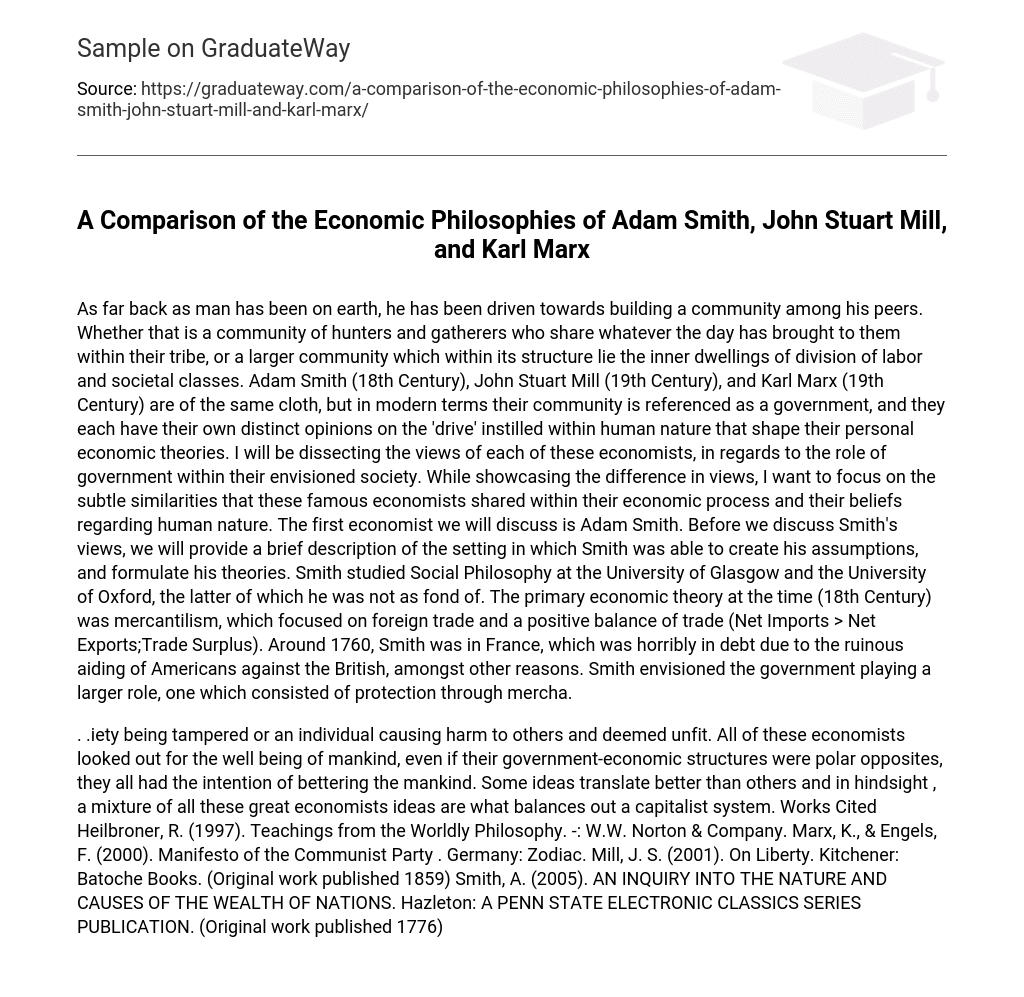As far back as man has been on earth, he has been driven towards building a community among his peers. Whether that is a community of hunters and gatherers who share whatever the day has brought to them within their tribe, or a larger community which within its structure lie the inner dwellings of division of labor and societal classes. Adam Smith (18th Century), John Stuart Mill (19th Century), and Karl Marx (19th Century) are of the same cloth, but in modern terms their community is referenced as a government, and they each have their own distinct opinions on the ‘drive’ instilled within human nature that shape their personal economic theories. I will be dissecting the views of each of these economists, in regards to the role of government within their envisioned society. While showcasing the difference in views, I want to focus on the subtle similarities that these famous economists shared within their economic process and their beliefs regarding human nature. The first economist we will discuss is Adam Smith. Before we discuss Smith’s views, we will provide a brief description of the setting in which Smith was able to create his assumptions, and formulate his theories. Smith studied Social Philosophy at the University of Glasgow and the University of Oxford, the latter of which he was not as fond of. The primary economic theory at the time (18th Century) was mercantilism, which focused on foreign trade and a positive balance of trade (Net Imports > Net Exports;Trade Surplus). Around 1760, Smith was in France, which was horribly in debt due to the ruinous aiding of Americans against the British, amongst other reasons. Smith envisioned the government playing a larger role, one which consisted of protection through mercha.
. .iety being tampered or an individual causing harm to others and deemed unfit. All of these economists looked out for the well being of mankind, even if their government-economic structures were polar opposites, they all had the intention of bettering the mankind. Some ideas translate better than others and in hindsight , a mixture of all these great economists ideas are what balances out a capitalist system. Works Cited Heilbroner, R. (1997). Teachings from the Worldly Philosophy. -: W.W. Norton & Company. Marx, K., & Engels, F. (2000). Manifesto of the Communist Party . Germany: Zodiac. Mill, J. S. (2001). On Liberty. Kitchener: Batoche Books. (Original work published 1859) Smith, A. (2005). AN INQUIRY INTO THE NATURE AND CAUSES OF THE WEALTH OF NATIONS. Hazleton: A PENN STATE ELECTRONIC CLASSICS SERIES PUBLICATION. (Original work published 1776)





